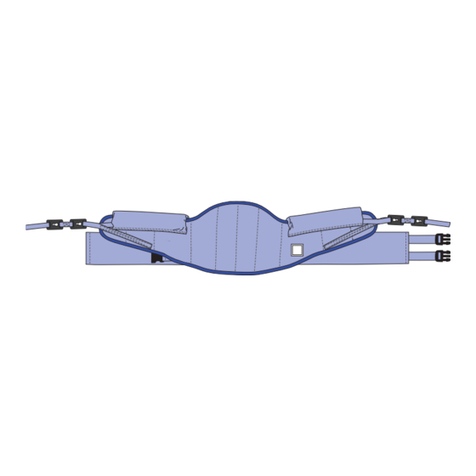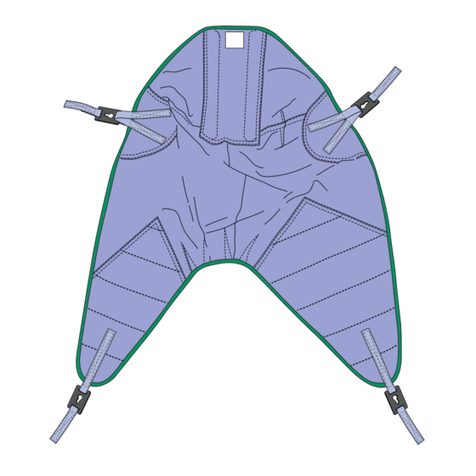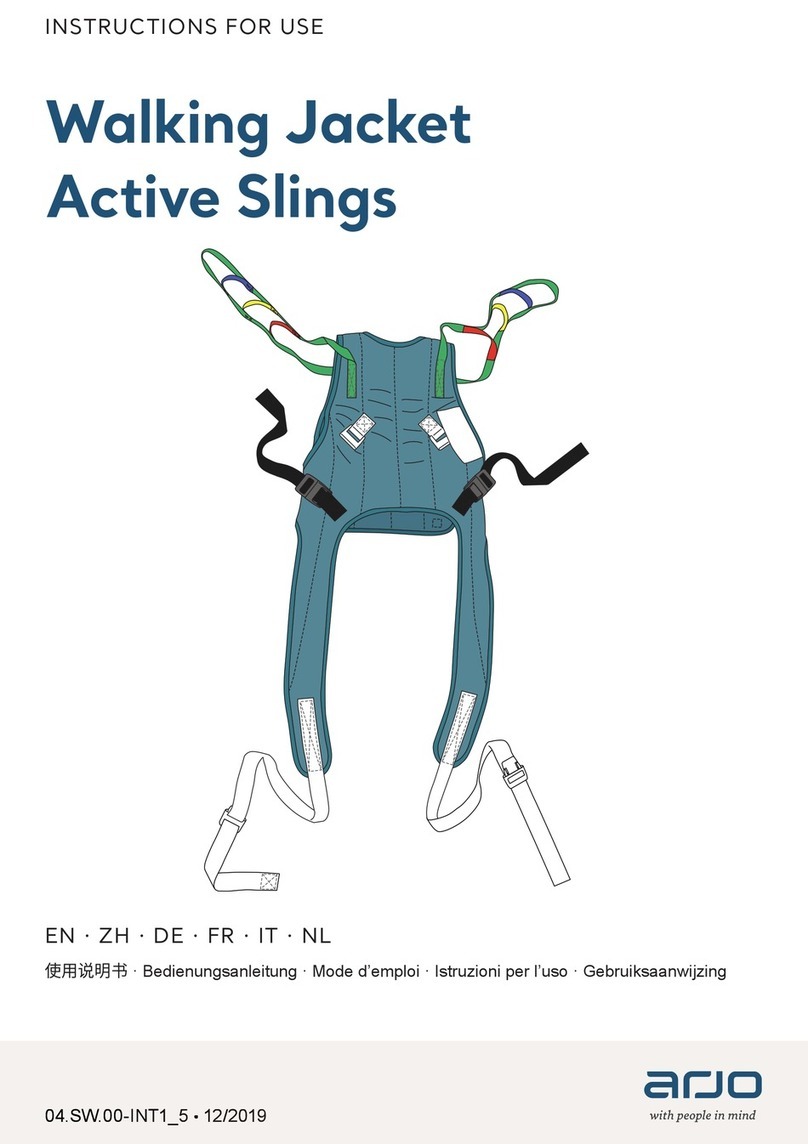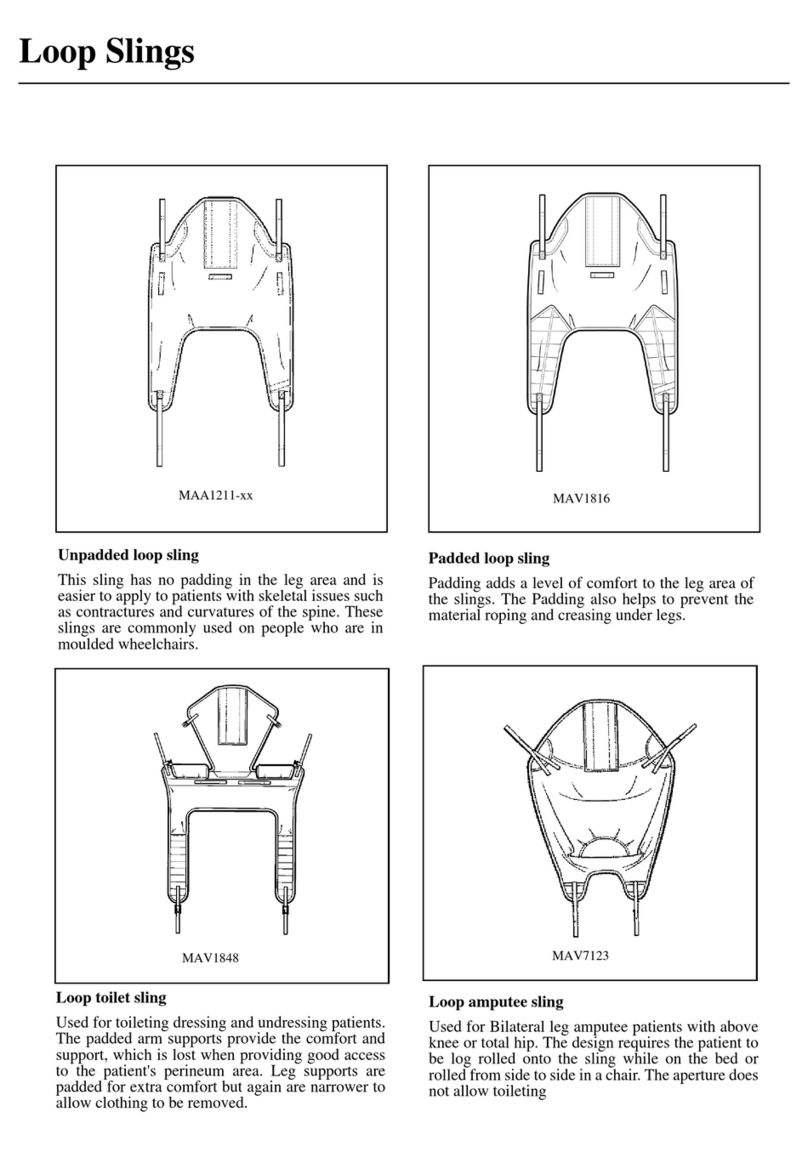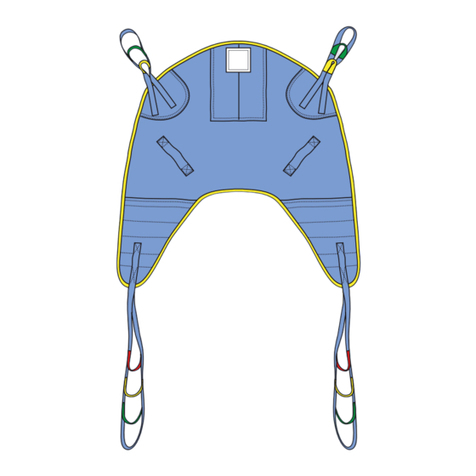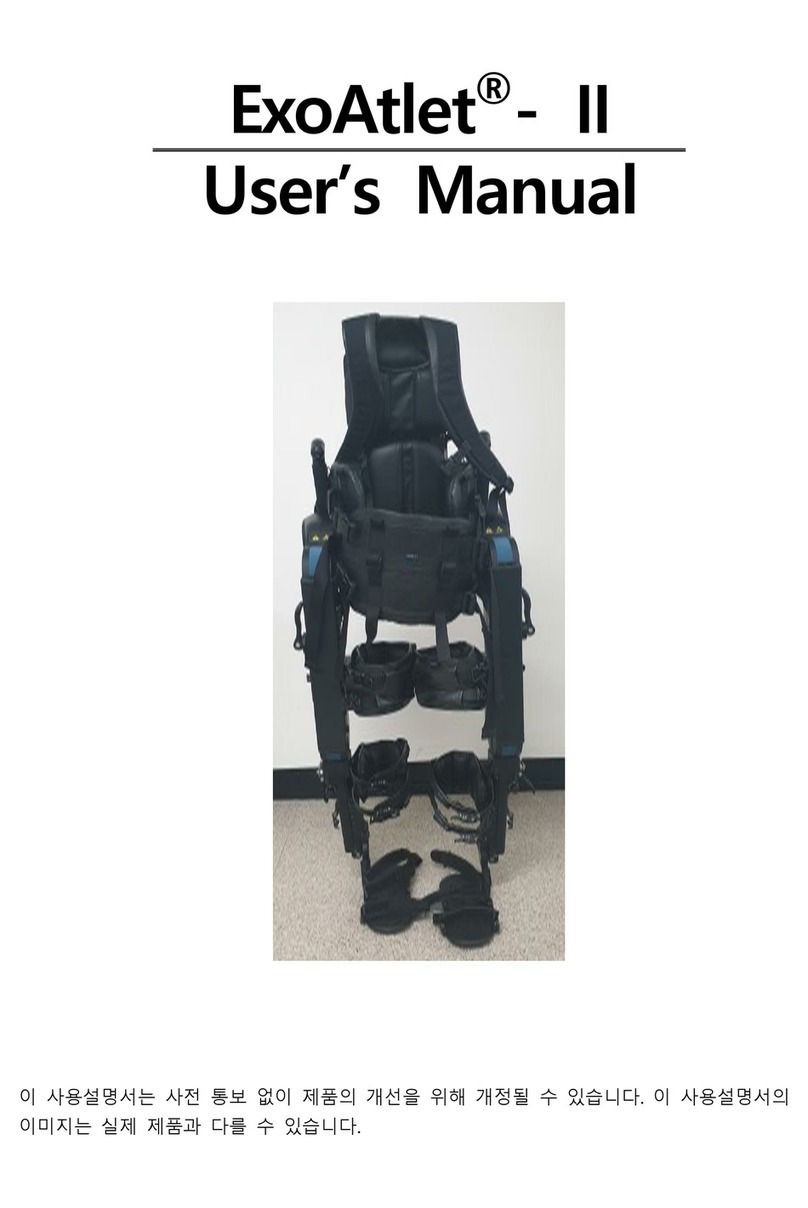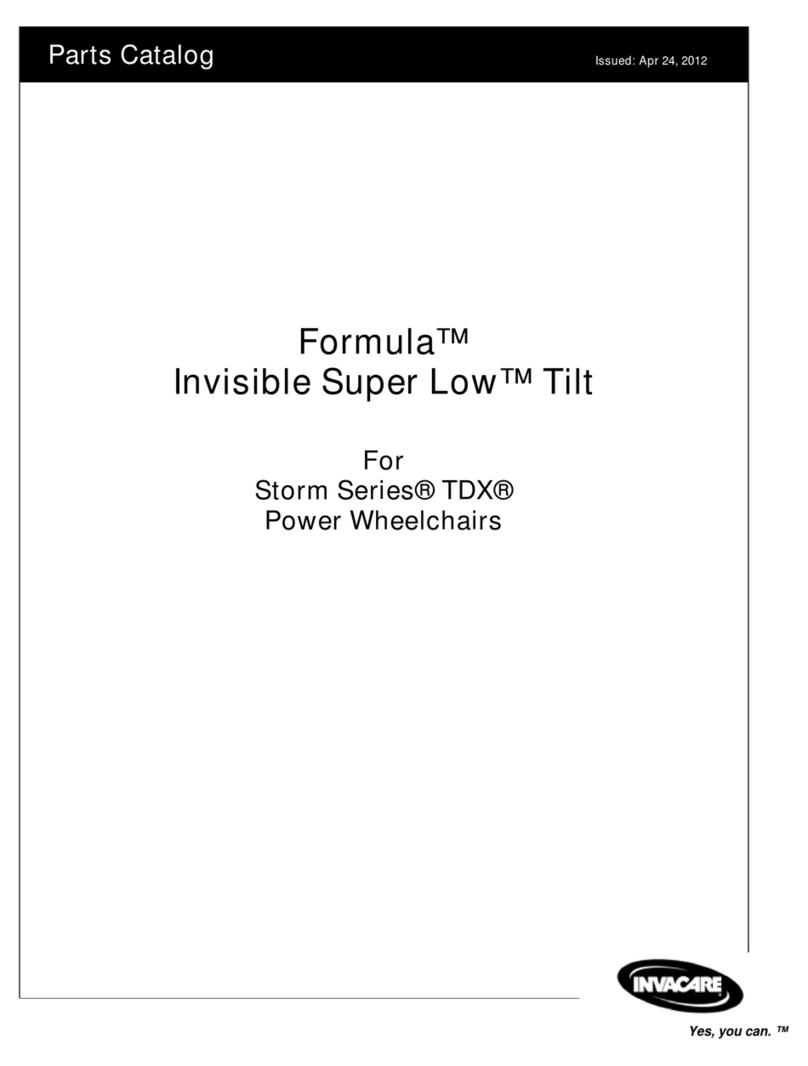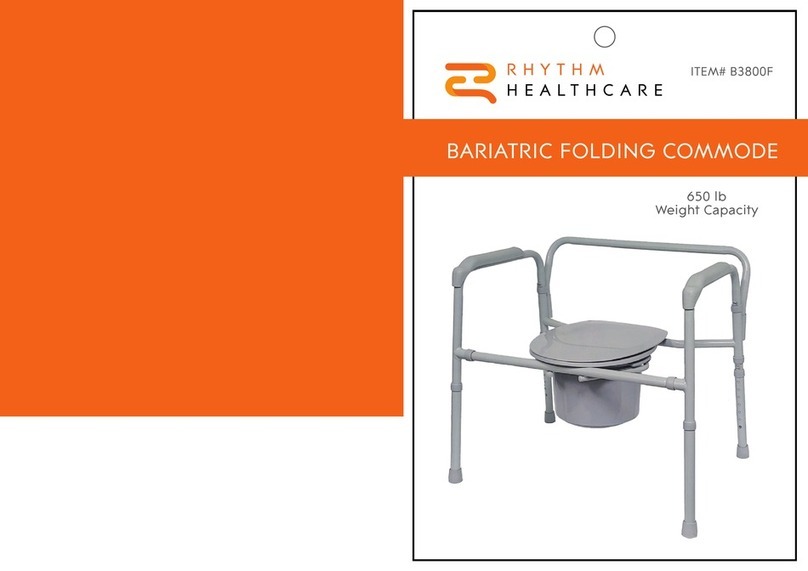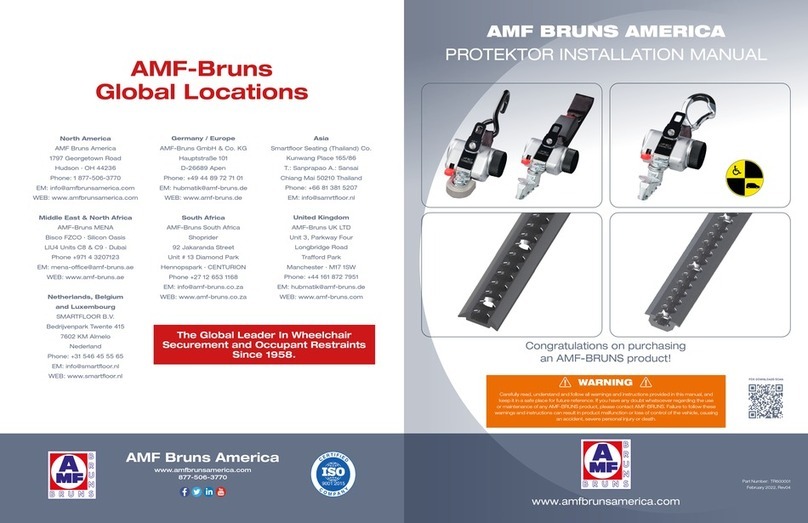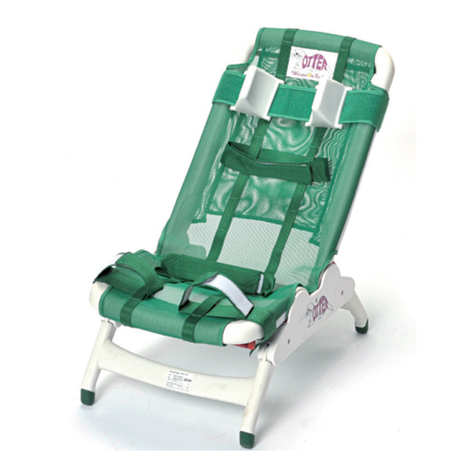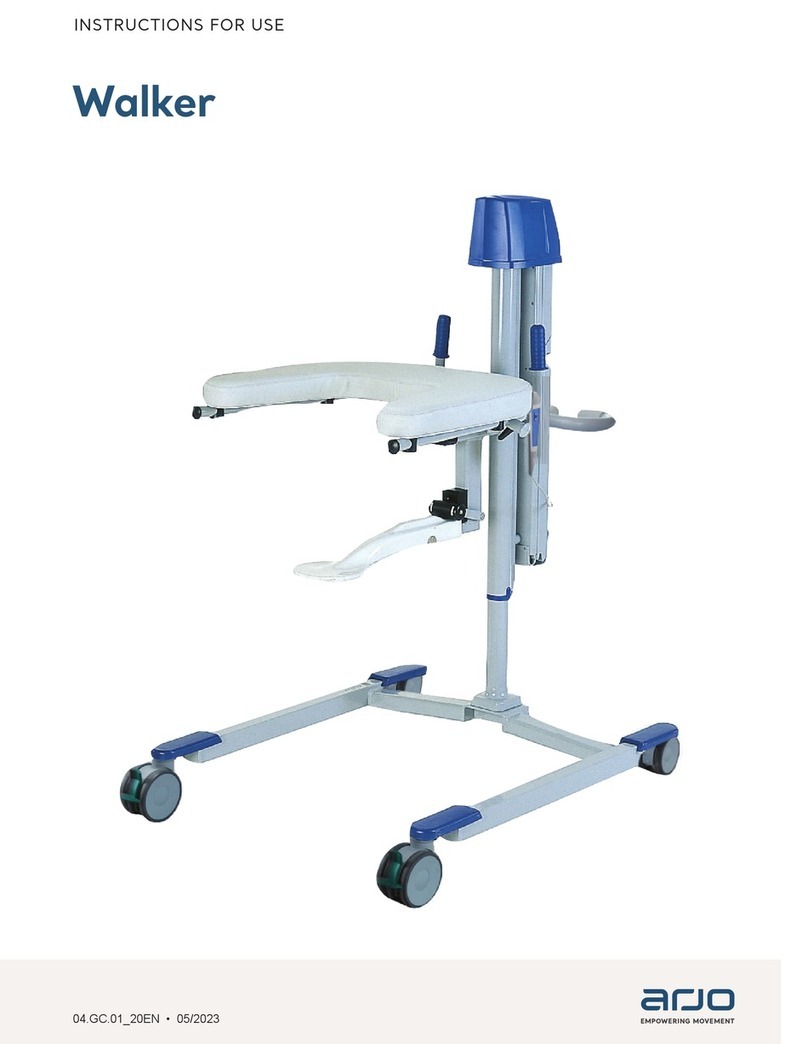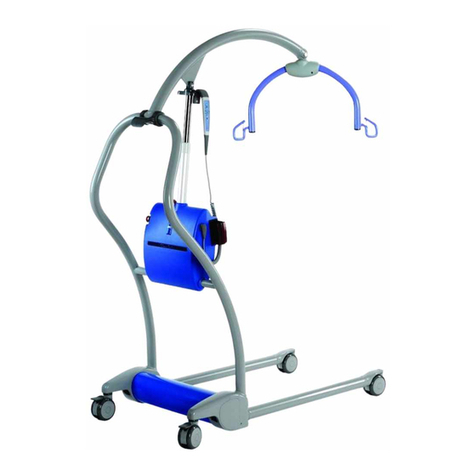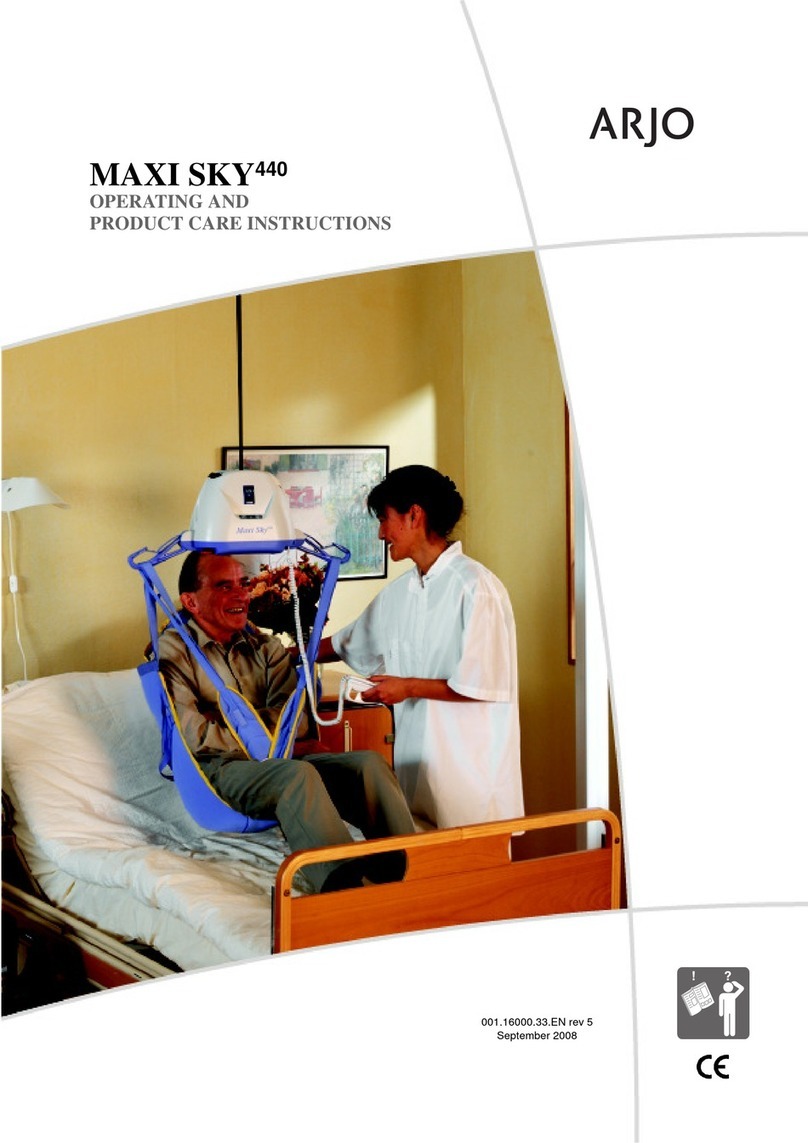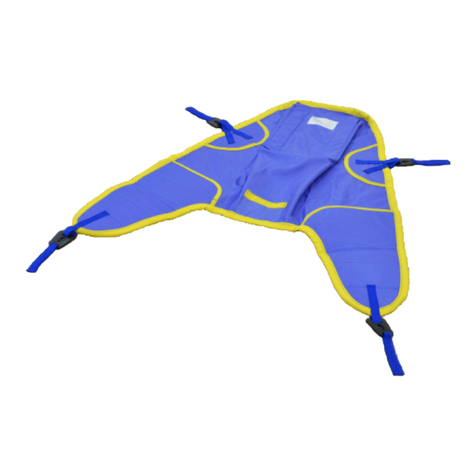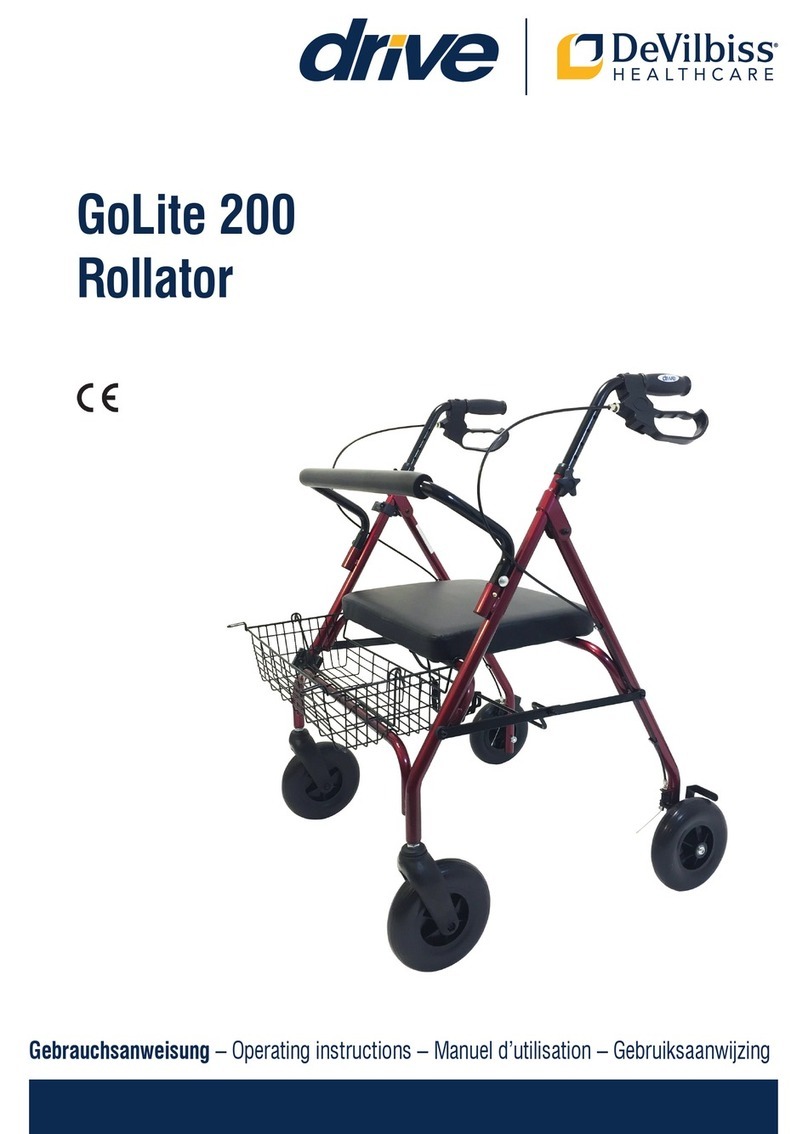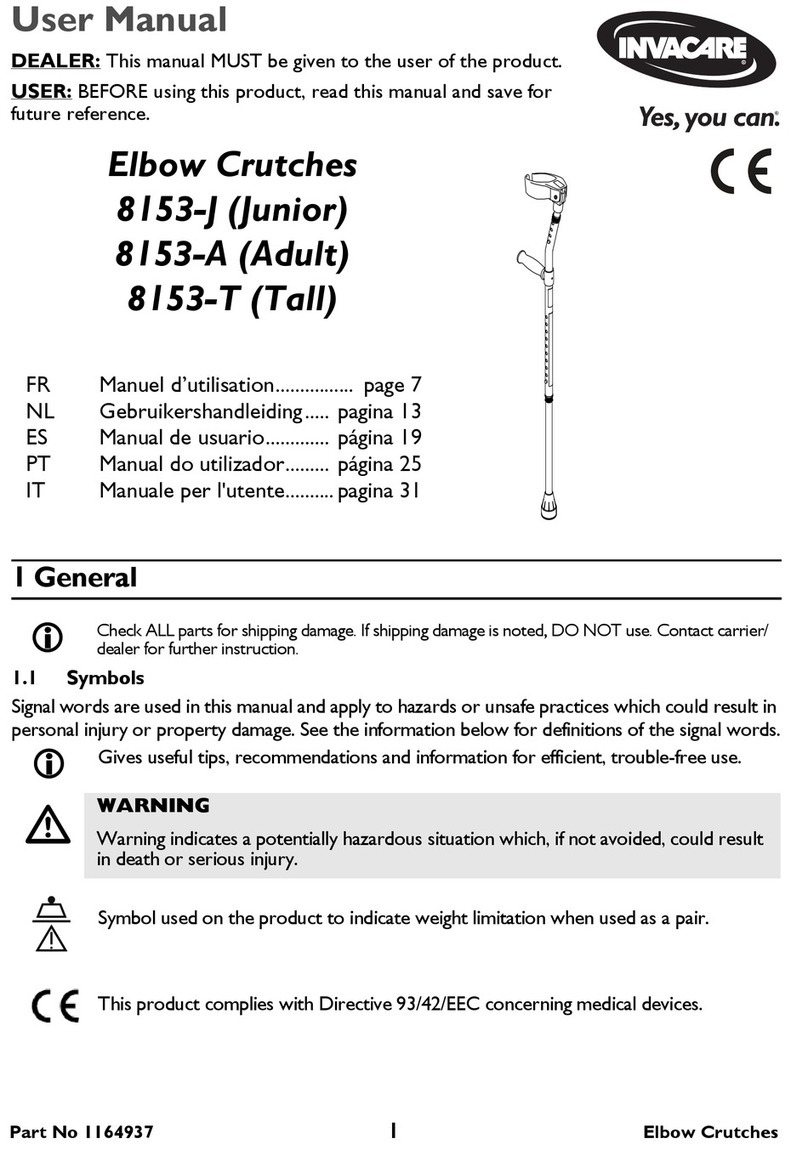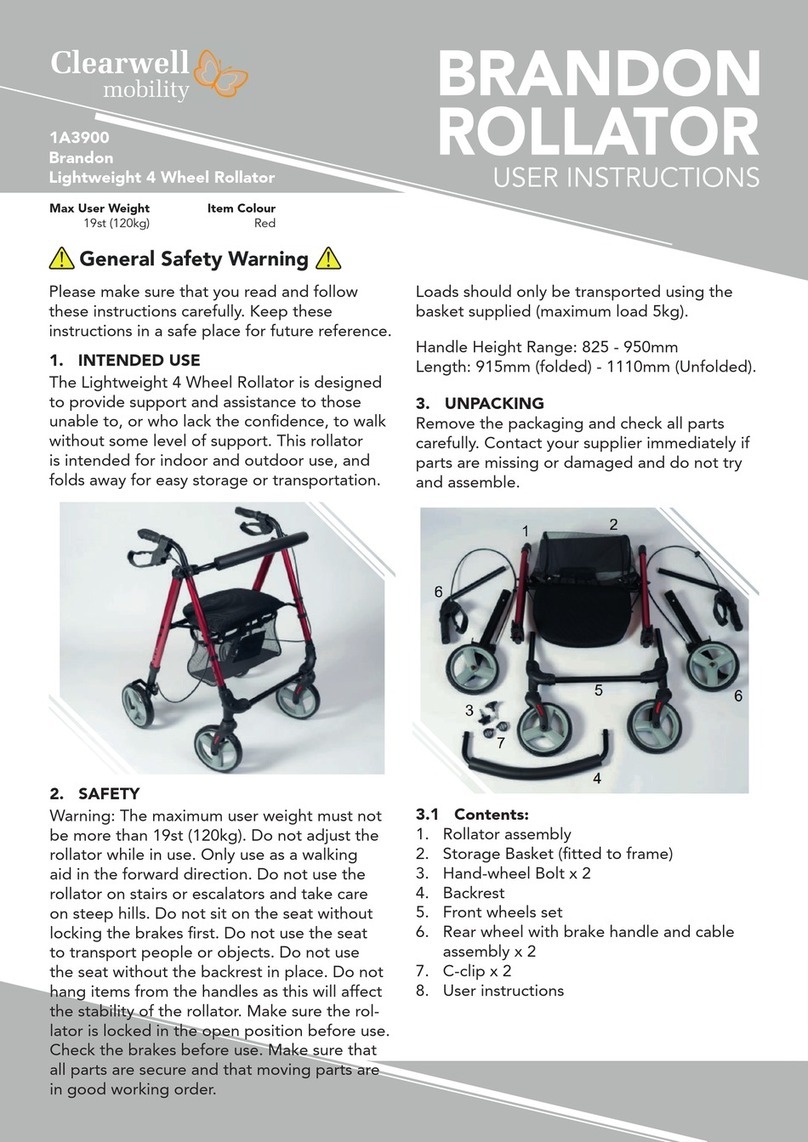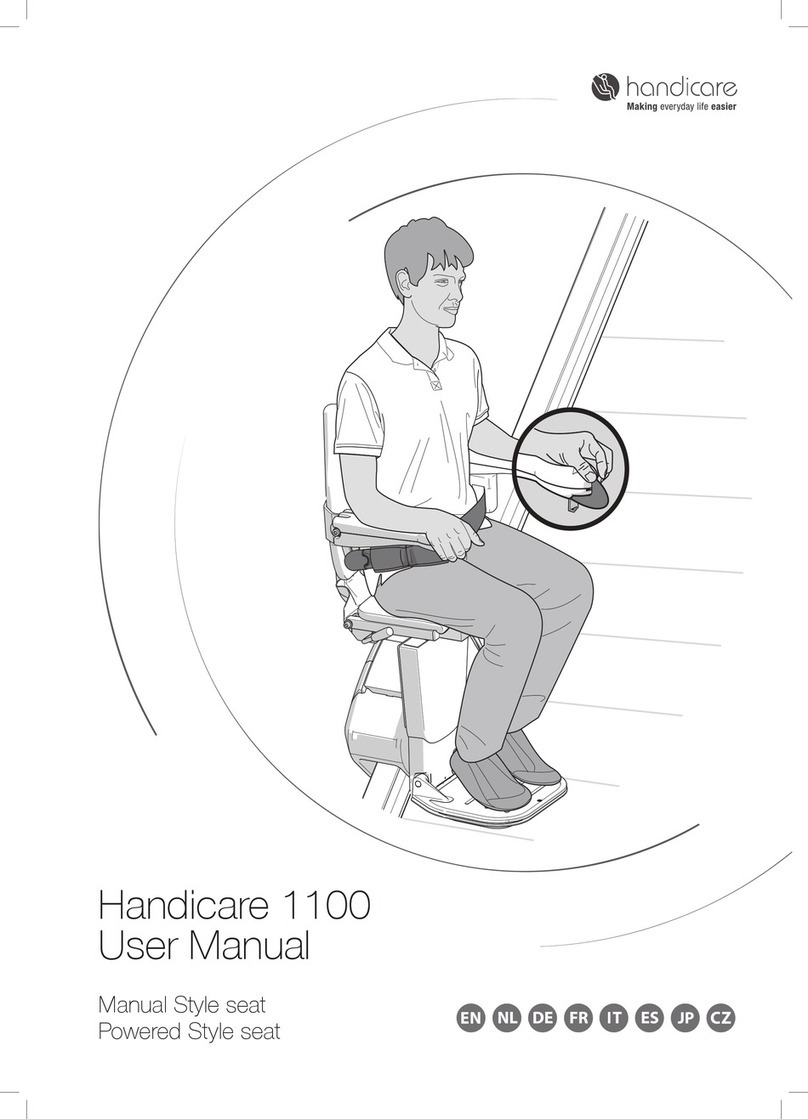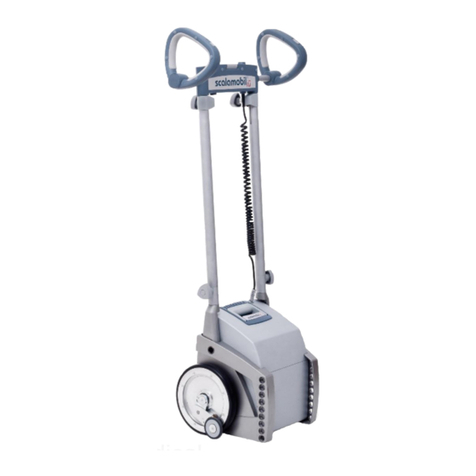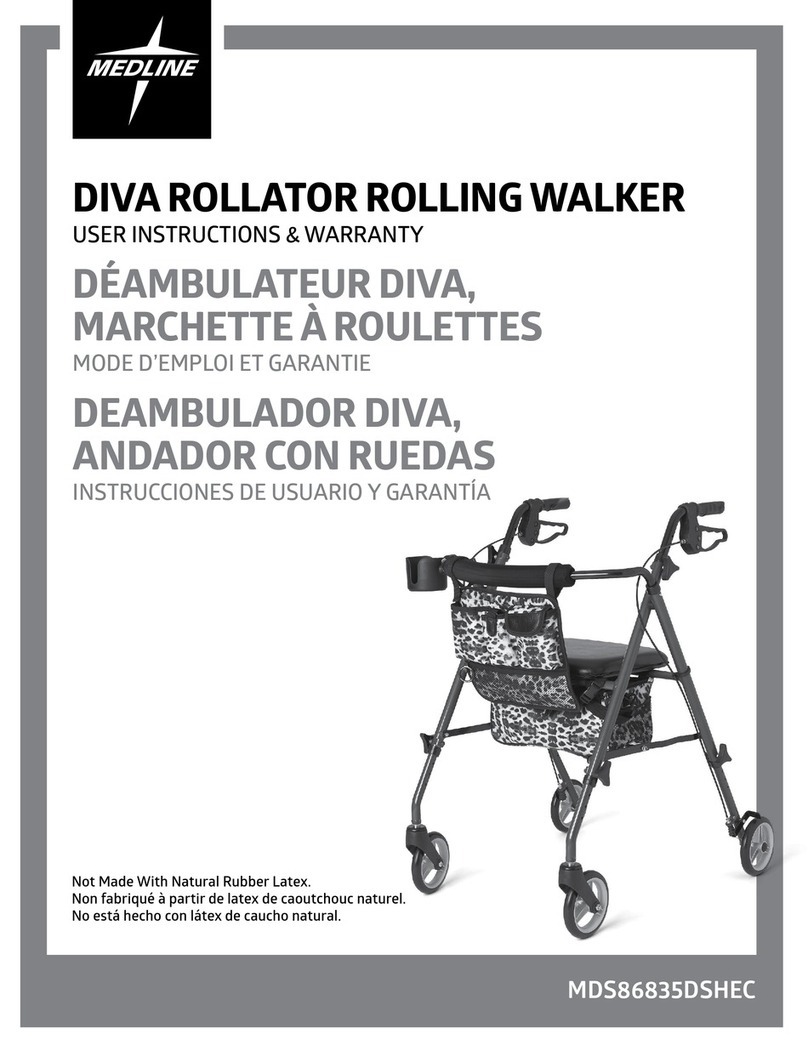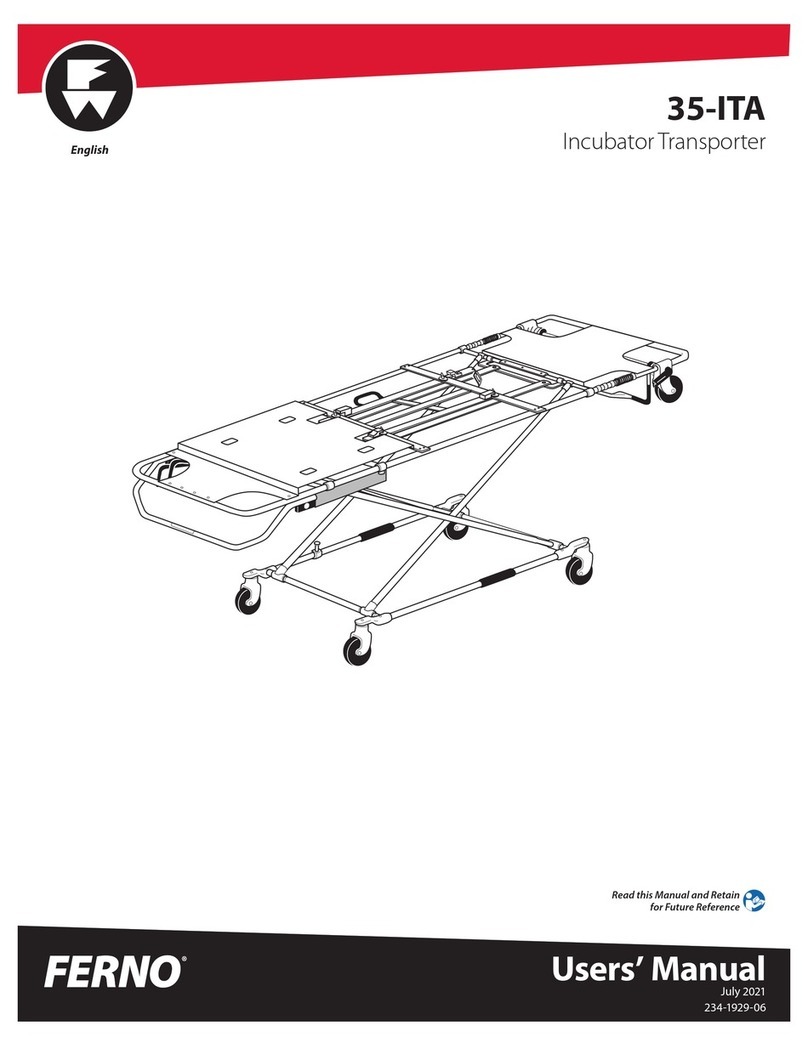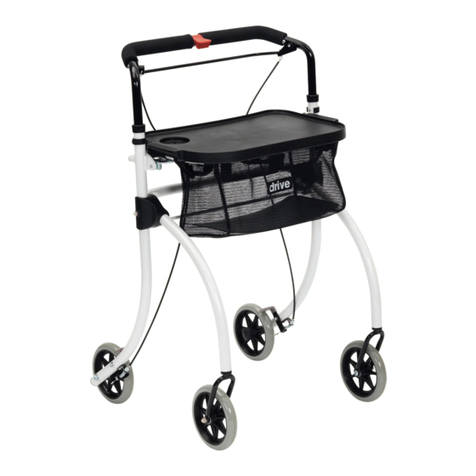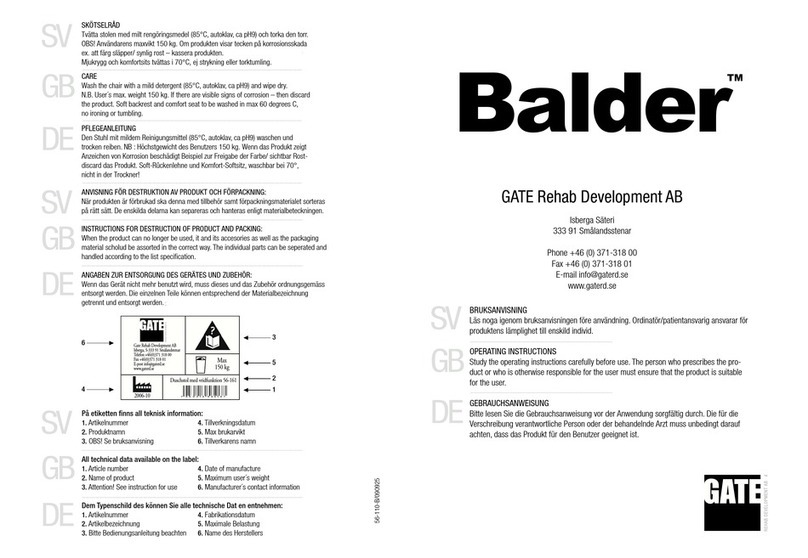
4
Thank you for purchasing ARJO equipment.
Your Sara 3000 is one of a series of quality
products designed especially for hospitals, nursing
homes and other health care uses.
ARJO is dedicated to serving your needs and
providing the best products available, together with
training that will bring your staff the maximum
benefit from every ARJO product.
Please contact us if you have any questions about
the operation or maintenance of your ARJO
equipment.
The letter (i) shown on the open book icon indicates
“information”, and is an instruction to always read
the operating instructions before use (see Fig. 14).
The expected operational life of the ARJO lift is 10
(ten) years from the date of manufacture, providing
that the following conditions are adhered to:
Conditions
• The unit is regularly cared for and serviced in
accordance with recommended, published
“Operating and Product Care Instructions” and
the “Preventive Maintenance Schedule”.
• The unit is maintained to the minimum
requirements as published in the “Preventive
Maintenance Schedule”.
• The servicing and product care, in accordance
with ARJO requirements, must begin with the
customer’s first use of the unit.
• The equipment is used for its intended purpose
only and is operated within the published
limitations.
• Only ARJO designated spare parts should be
used.
The date of manufacture can be found in the second
set of 4 digits of the serial number, for example
STLA 0309 A 1001. (STLA = manufacturers code,
03 = year 2003, 09 = month September, A = charger
country code). The remaining digits are the
machine identification number.
Consumables
The expected operational life for fabric slings is
approximately 2 years from the date of
manufacture. This life expectancy only applies if
the slings have been cleaned, maintained and
inspected in accordance with the “ARJO Sling
Information” documents, the “Operating and
Product Care Instructions” and the “Preventive
Maintenance Schedule”.
The expected life for other consumable products,
such as batteries, fuses, lamps, safety belts, padded
covers, and straps is dependent on the care and
usage of the equipment concerned. Consumables
must be maintained in accordance with the
published “Operating and Product Care
Instructions” and the “Preventive Maintenance
Schedule”.
All references to the patient in these instructions
refer to the person being lifted, and references to the
attendant refer to the person who operates the lift.
References to left and right of the lift in these
instructions are as viewed when you are standing at
the rear of the Sara 3000, facing forward, as viewed
from the control panel (see Fig. 1).
Lifting operations in these instructions are
described as if lifting a patient from a chair. The
same operations can be performed effectively when
lifting a patient from a wheelchair or sitting
position on a bed, although a second attendant
should support the patient if the patient lacks sitting
balance.
All operations in these instructions are described as
if the attendant were using the control handset.
Foreword

